Establishing the Perfect Timeline for Window Replacement
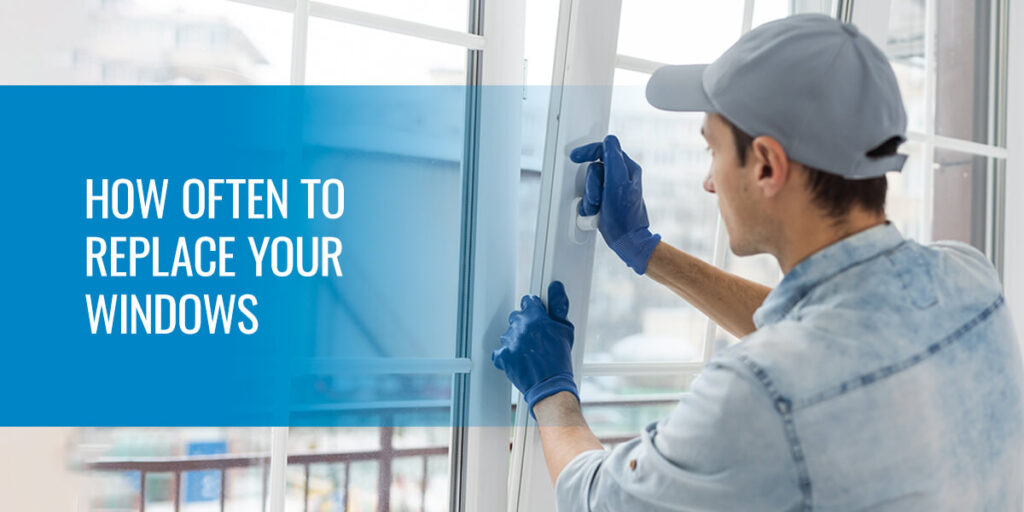
While we use windows every day in our homes, it can be easy to forget they need proper maintenance and eventual replacing. Because windows come with your house, it may be challenging to know when to replace them, especially if you’re unsure of when they were initially installed.
Fortunately, understanding how the life span of window materials and other factors that affect the durability of windows can help you determine when the best time is to replace your home’s windows. Use our guide to learn more so you can keep your home in its best condition.
Life Span of Window Materials
Windows are built to withstand the pressures of outside elements. They’re securely installed to keep your home well-insulated and secure year-round. The appropriate time to replace home windows depends on your house’s unique design, window use and location. Typically, you can expect to get at least 15 years out of your windows before needing replacements.
Some window materials will last longer than others, but here’s an easy guide to window life span for your home:
Vinyl/Fiberglass windows: 20-40 years
Wood: 30+ years
Aluminum/Aluminum-clad: 15-20 years
Skylights: 10-20 years
Double-pane: 8-20 years
Window glazing: 10+ years
Factors That Affect Window Life
While you can use estimates to help you decide when to replace house windows, other factors can affect their life span. Some factors like weather are out of your control, but you can counter some of these variables with proper care. The exact time when you’ll need a window replacement depends on several factors, all of which will influence window life differently:
1. Materials
The construction material for a window significantly impacts how long it lasts. Non-synthetic materials like wood are more susceptible to water damage. Synthetics can resist water better, but some of them are less efficient. On the other hand, windows with paint will need more frequent touch-ups to keep them looking good. Whatever material you choose, be sure it can hold up to your location and use.

2. Weather
Unfortunately, you can’t escape the effects of the weather. Rain, heat waves, snowfall, hailstorms and more can all give your windows some wear. Weather can lead to considerable problems or minor damages over time. Depending on where your home is, your windows might have to deal with more stressors than windows in other areas.
Some weather conditions that can cause window damage include:
Sunlight: Windows are constantly exposed to sunlight. Ultraviolet (UV) rays can break down windows. Some windows receive more sunlight based on their location in your house, so they might wear out quicker due to sun damage compared to your other windows.
Extreme temperature changes: Rapid temperature fluctuations can create shape changes and warp in windows. The stress of handling temperature changes might lead to more window problems down the road.
Humidity: Humidity, moisture and rain can all cause water damage in your windows. Moisture can get into the window and lead to mold growth, cracked paint, warping and discoloration. Moisture damage is much more likely to occur in a damp climate, so homeowners in humid areas should watch out for water-based issues.
Hail: Hail can crack and break window glass if it’s large or fast enough. While this damage is sudden instead of gradual like the other weather conditions mentioned, it’s an important concern for homeowners who live in areas that get hail.
3. Frequency
The more use your windows see, the sooner they’ll need replacing. While windows are meant to be opened and closed, the components that allow you to do so will eventually wear out. If you’re constantly opening, closing or even slamming your windows, you’ll find yourself needing to replace them sooner rather than later. Regular use is normal, but you should expect to replace windows you open more frequently before windows in unused rooms.
4. Installation
The installation also influences the quality and strength of windows. A poor installation can result in a shortened life span and costly repairs. DIY window installations can often lead to improperly-fitted windows and installations that aren’t up to code. Due to the weight and precision involved in window installations, getting a professional installation is essential for a durable window. A professional installation will better secure your windows and keep them lasting for years.
5. Maintenance
Proper care is another essential factor for window life. Neglecting windows can cause minor problems to turn into expensive, major ones. If you don’t maintain your windows, it’s likely they won’t hold up to wear and tear as well as they could with proper care. Get your windows professionally repaired and perform minor maintenance regularly to ensure your investment lasts.
How to Know When to Replace Windows
If your windows aren’t obviously cracked or falling out of the frame, you might not know they need replacing. So, how do you know when it’s time to replace your windows?
You can easily catch the often-overlooked signs of window damage with careful inspection. But sometimes, it’s not just damage that means you need a window replacement. Old windows often need upgrades since they’re less efficient and secure than newer window technology. Small problems or age can signal your windows are coming to the end of their usefulness for your home.
If you see any of the following signs on your windows, it might be time for a replacement:

1. Increasing Energy Bills
If you’re noticing an unexpected spike in your energy bills recently, your windows could be the culprit. While changing seasons and temperatures will cause minor changes in your energy costs, an increase out of nowhere might indicate a leak.
Windows help insulate and seal your home, keeping everything at a comfortable temperature. Any holes or gaps in the window frame might affect the atmosphere inside your home. Your heating and cooling system will have to work even harder to counter the effects of the opening, increasing your energy bill over time.
2. Window Age
As time goes on, window seals and components can wear down and lose their insulation abilities. Do you see unexpected energy costs? Check your windows to ensure they’re not the cause. If your windows aren’t insulating your house correctly, it’s time to replace them.
Once your windows are at or past their estimated life span, you should look into replacing them. Upgrades in sealing, filters and materials mean newer windows are better at saving money and securing your home.
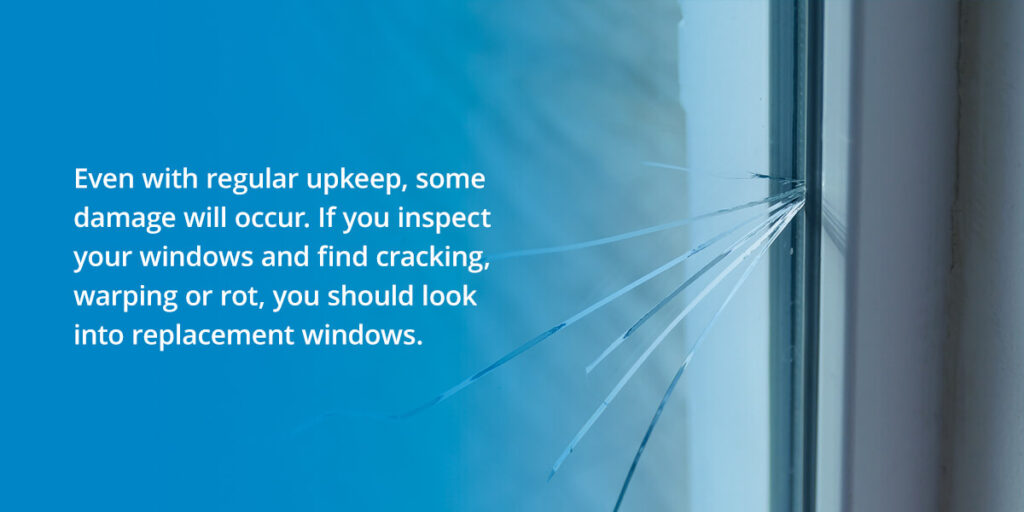
3. Visible Damage
Even with regular upkeep, some damage will occur. If you inspect your windows and find cracking, warping or rot, you should look into replacement windows. While minor problems can simply be repaired, once the damage is extensive and visible, it’s time for new windows. Leaving windows with visible damage installed can create insulation and water issues and can potentially damage other parts of your house.
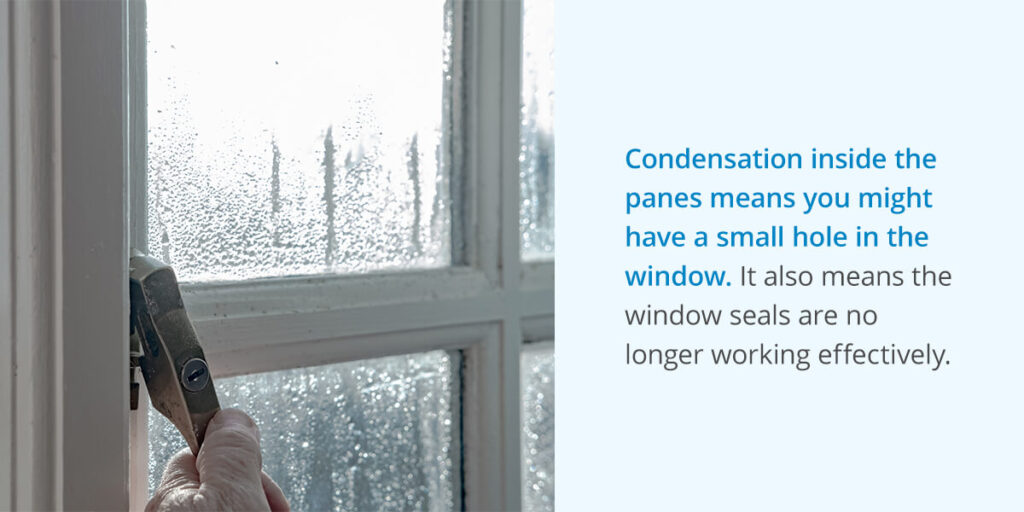
4. Condensation or Fogging
If you have windows with multiple panes, condensation can sometimes occur in between the panes. Condensation inside the panes means you might have a small hole in the window. It also means the window seals are no longer working effectively.
To replace seals, the entire window must be removed, which requires professional service to do correctly. If you have older window frames, it’s likely a better investment to replace the window entirely. This will give you new, more efficient windows for better long-term savings.
5. Drafts
Sometimes, your windows are the reason a pesky breeze is troubling your home. Drafts are unpleasant — they make a cozy house colder in the winter, forcing your heating system to work over time.
If you have drafts, it’s a sign you should update your windows, as old windows are especially susceptible to getting drafts. Glass will warp with time and its adhesives and rubber gaskets will degrade.
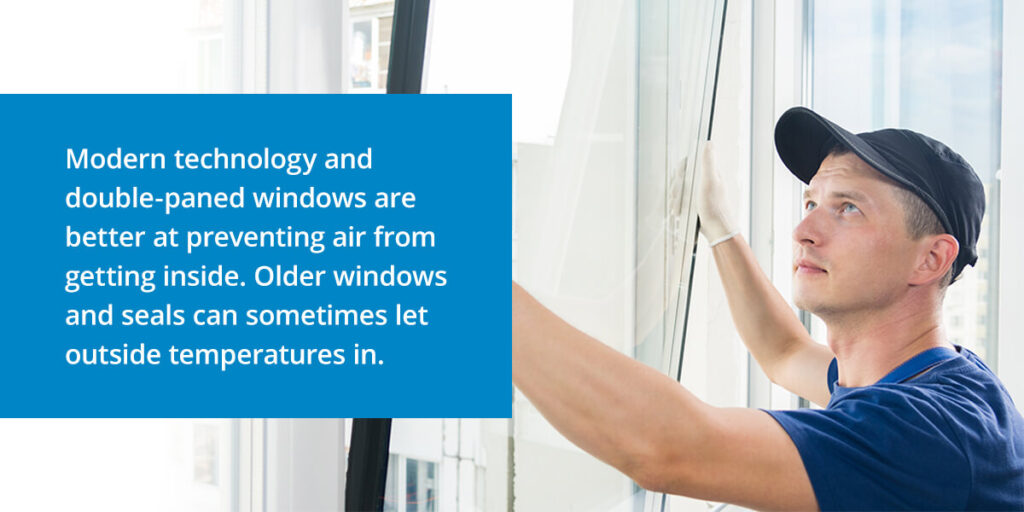
6. Hot or Cold Glass
Modern technology and double-paned windows are better at preventing air from getting inside. Older windows and seals can sometimes let outside temperatures in. If you touch your window pane and it feels like the temperature does outside, your window isn’t insulating your house as well as it could. You’ll need to replace them with windows that can correctly protect your home against outside elements.
7. Faded Carpet or Furniture
If you spot faded carpet or furniture around your windows, you should look into window replacements. This fading happens when your window doesn’t have good-quality UV protection.
Fortunately, that damage to your belongings is avoidable with a window upgrade. Look for windows with low-emissivity (low-E) glass. Low-E glass is treated with a microscopic film that stops solar heat and UV rays from getting through. This helps keep your home cool and prevents fading and damage to furniture.
Things to Consider When Getting Window Replacement
Spotting some of the above signs will tell you when to replace windows in your home. If you’ve decided you need new windows, you’ll have to consider a few points to guide your decisions. Putting off replacement will leave you with expensive repairs over time, and you’ll eventually have to replace your windows anyway.
Windows are essential to the security and function of your home, so you want to select the best possible window for the job. To help you make your window decision, here are some variables to think about for replacement:

1. Budget
Keep your budget in mind when making a decision about windows, as you always want to choose window types you can afford. However, you also want to avoid getting the cheapest windows. While it might seem like you’re saving by going with the less-expensive option, you’ll pay more money long-term to keep the units in good condition. The higher quality your windows, the longer they’ll hold up, saving you money on frequent repairs.
2. Location
While all windows work to keep your home insulated, different regions have varying weather conditions. Research windows and look for units rated for the type of weather your area experiences. Homes in places with high winds and cold temperatures need windows rated for low-temperature wind resistance. Get windows you know will stand up to the pressures of your home location for a good investment.
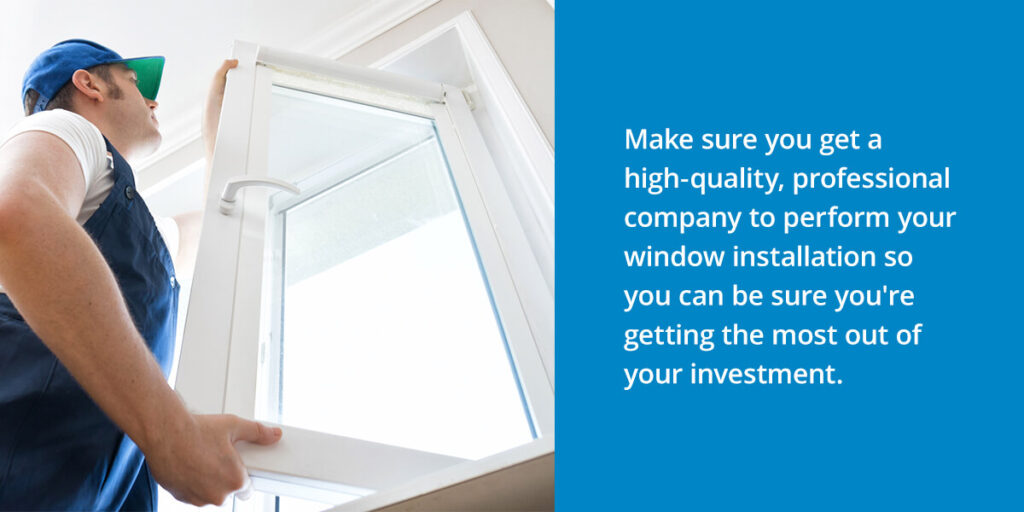
3. Company
Choosing a reputable window company is essential for an extended window life. The installation of windows needs to be precise — any gaps or poor fittings and your window won’t insulate your home. If your window is DIY installed or done incorrectly, you’ll have to pay for energy costs, window refitting and even a new replacement window. Make sure you get a high-quality, professional company to perform your window installation so you can be sure you’re getting the most out of your investment.
4. Extra Features
Extra features will increase the price of your windows, but they can also improve the units’ efficiency, function and life span. Fine-mesh screens let more light through than traditional screens, while double-hung window sashes that tilt allow you to clean the window more easily. Full screens improve airflow and low-E coatings give you more efficient windows. Spending a little extra on window upgrades can give you a more comfortable, durable home for years.
5. Time
Time is another consideration you’ll have to consider when replacing your windows. With professional installations, you won’t have to worry about blocking off a huge chunk of your week for the job — residential window installations can occur in one day. While you don’t need to stay near the installers all day, you should plan to take the day off work or work from home, if possible. This lets you prepare for your home window installation and remain close enough to answer questions, but you won’t have to give up your entire day watching the window work.

How to Prolong the Life of Your Windows
Because many factors can shorten the life span of your windows, it’s essential to stay on top of window care. Like anything used daily, windows need regular care and upkeep to stay in top shape. Here are some steps you can take to preserve your investment:
1. Inspect Them Annually
Perform an annual inspection on your windows to ensure they’re still in top condition. Check all home window parts and components for flaws and potential damages. Keep track of any imperfections you notice and if they need immediate attention. Look for chipped paint, cracks in the material, sealant breaks or holes and window leaks. Test the window to see if it’s working smoothly and ensure it opens and closes fully.
Additionally, look for leaks and poor drainage around or above vents and sprinkler systems. These areas can subject your windows to prolonged water exposure, causing wear and tear. If water gets into the window, it can lead to moisture damage, cracking and rot, which are serious problems for any window. You should also check in on your windows after severe weather like hailstorms just to be safe.
2. Pay Attention to the Caulking
The caulking or sealant around your windows keeps them watertight and prevents air from sneaking inside. If any of the caulking around your windows is broken, cracked or missing, you should get them repaired immediately. Damaged sealant can let in water — even minor spots or holes will allow moisture to creep into the window and house.
Pay careful attention to the caulking around the bottom corners and in between windows. These are weak spots where the caulk is more likely to fail.
3. Check the Finish
If you have wood windows, the finish will need maintenance to keep it in tip-top shape. The paint on your wood windows helps the windows look good and protects them from the elements. The sun’s rays can fade and damage the finish, compromising its protection for your window. Look for peeling, fading and cracking on the interior and exterior finish for damage. If you see any, get it fixed right away so your windows aren’t left unprotected.
4. Clean and Lubricate the Window Tracks
While glass is probably the first thing you think of when going to clean a window, it’s even more important to clean the window tracks. Without regular cleaning, debris and dirt will build up in your window tracks, preventing them from working smoothly. Eventually, enough buildup will cause your windows to stick. Avoid this by clearing out your window tracks with a dry brush. For stuck-on grime, use some soap and water to gently clean it off.
For better performance, you can lubricate your window tracks. Applying oil-free lubricant to the window weatherstripping will ensure you have a smooth, easy-to-operate window year-round. Avoid using oil-based lubricants, as the oil can potentially attract dirt, dust and grime, clogging window tracks excessively.
5. Check the Window Fit
As with most things, the older your window, the more likely it is the window doesn’t fit as well as it once did. Fluctuating temperatures, exposure to the elements and everyday wear and tear can lead to small changes in window size and shape. Your home can also settle as the years go by, influencing how your windows fit.
Review the window entirely — make sure it locks correctly and opens and closes all the way. Signs of moisture could also mean you have a window fit issue. The window will need a proper fit so that your home is insulated and secure once again.
6. Take Extra Precautions
If your home is in an area with extreme weather conditions, you’ll have to take extra steps to protect your windows. You need windows rated to deal with these high-stress conditions in climates with cold temperatures and high winds. You’ll also have to check these windows more frequently to ensure you don’t have drafts or window damage.
Specifically, homes near the ocean have to watch out for salt spray. Salt spray is corrosive — it can eat away at vinyl, wood and fiberglass. Windows that experience frequent salt spray will need checkups more often to ensure they aren’t getting damaged. You should also remove the corrosive salt from your windows by cleaning them four times a year with a mild detergent.

Superior Window Replacement With Coldstream Exteriors
You want the best for your home — the right installation and parts can mean a long-lasting, secure house to relax in. To ensure you get the best insulation and security for your home, trust Coldstream Exteriors with your window jobs. Choose from our many window options and get the best savings and function with our professional window replacement and installation services.
Window installation requires expert precision and handling. Our fully-insured business is rated A+ by the Better Business Bureau, so you can be sure you’re getting the best customer service from our team. If you’re in the greater Tampa, Cincinnati or St. Louis areas, we can provide you with high-quality windows and a lifetime warranty for an affordable price.
If you need window replacement or installation, contact us to schedule a free inspection and get started on your project now!
